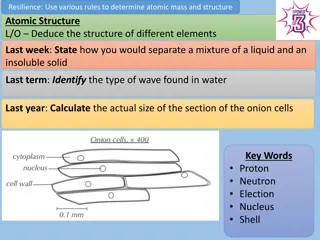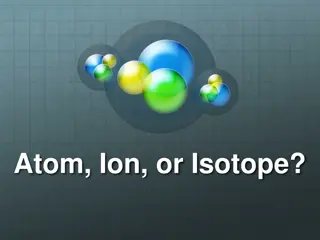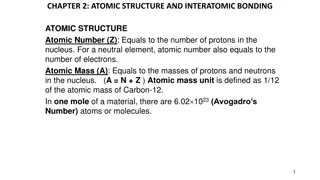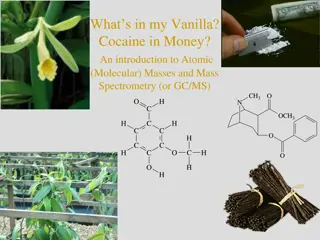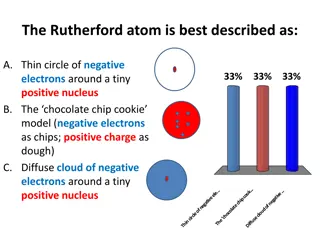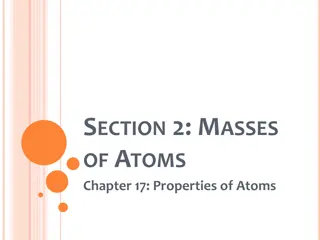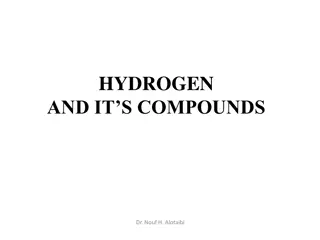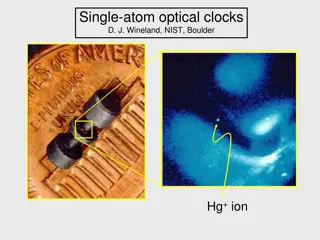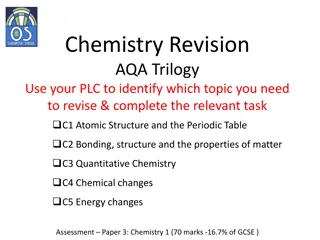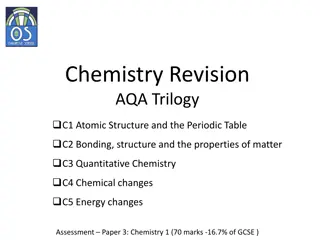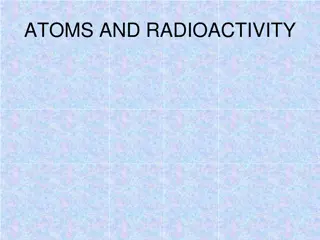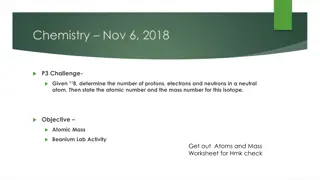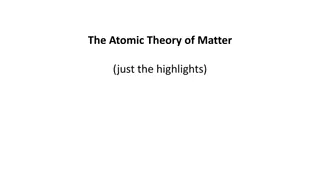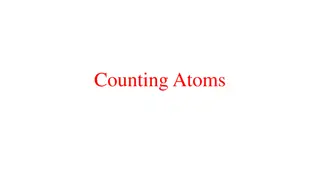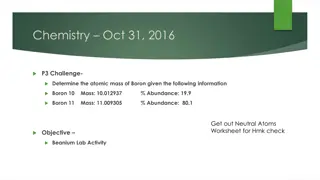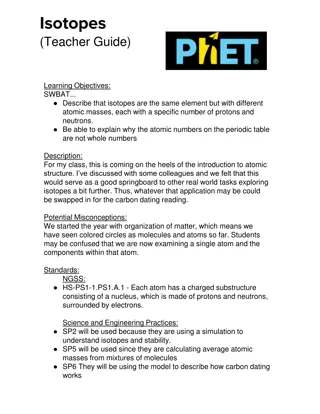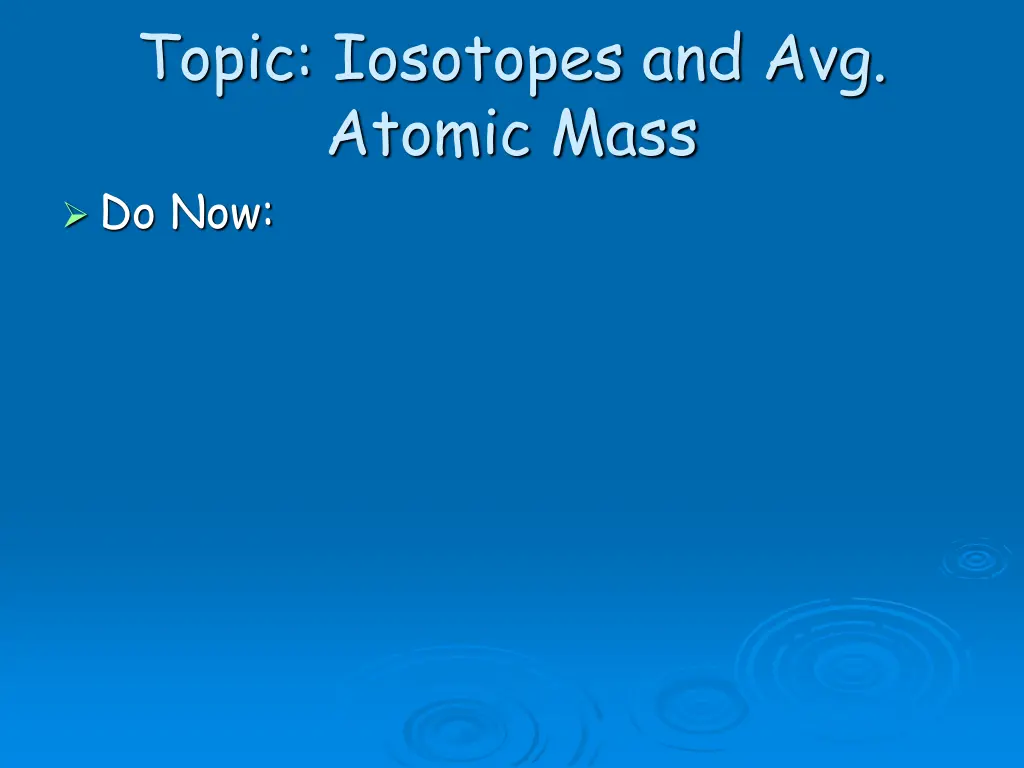
Understanding Isotopes and Average Atomic Mass in Chemistry Studies
Explore the concepts of isotopes, atomic mass, and atomic structure in chemistry through an insightful discussion on Dalton's atomic theory, isotopes of hydrogen, and calculations of atomic mass using weighted averages. Learn about the unit for average atomic mass (AMU), the definition of atomic mass unit, and practical examples such as the average atomic mass of chlorine and silicon isotopes. Challenge yourself with calculating the average atomic mass of silicon based on percentage abundances and mass values provided.
Download Presentation

Please find below an Image/Link to download the presentation.
The content on the website is provided AS IS for your information and personal use only. It may not be sold, licensed, or shared on other websites without obtaining consent from the author. If you encounter any issues during the download, it is possible that the publisher has removed the file from their server.
You are allowed to download the files provided on this website for personal or commercial use, subject to the condition that they are used lawfully. All files are the property of their respective owners.
The content on the website is provided AS IS for your information and personal use only. It may not be sold, licensed, or shared on other websites without obtaining consent from the author.
E N D
Presentation Transcript
Topic: Iosotopes and Avg. Atomic Mass Do Now:
Dalton 1766 1) 2) Atoms (tiny) Atoms of same element are identical * Indestructible * Combine in whole # ratio (H2O) In chem rxn. are combined, separated, rearranged Remember #2 well Dalton was correct 3) 4) 5) *turned out to not be entirely be true
These three hydrogens are found in nature All H s have 1 proton H-1: mass # = 1 1-1 = 0 neutrons H-2: mass # = 2 2-1 = 1neutron H-3: mass # = 3 3-1 = 2 neutrons
Isotopes atoms of same element with different # neutrons (mass # is different) # protons stays same! (atomic # is same)
Consider U-234, U-235, & U-238 92 What s the atomic number of U? How many protons in U? How many neutrons in U-234? How many neutrons in U-235? How many neutrons in U-238? How many electrons in U? 92 234 92 = 142 235 92 = 143 238 92 = 146 92
Average Atomic Mass The atomic masses reported in the periodic table represent the weighted average of the masses of the naturally occurring isotopes of that element
Unit for Avg. Atomic Mass = Amu (or regents says just u) atomic mass unit Define as 1/12 the mass of a Carbon-12 atom
Avg. Atomic Mass of Chlorine (Cl has 2 isotopes) % Abundance 75.770% Cl-35 Cl-37 24.230% Mass(percent) + mass(percent) + = avg. atomic mass 35(.75770) + 37(.24230) = 35.453 amu
NOW YOU TRY Avg. Atomic Mass of Si 92.21% of Si has a mass of 27.97693 amu 4.70% of Si has a mass of 28.97649 amu 3.09% of Si has a mass of 29.97376 amu
Avg. Atomic Mass of Si 0.9221 X27.97693 25.7975 amu 0.0470 X 28.97649 1.3619 amu + 0.0309 X 29.97376 0.9262 amu 28.0856 amu

